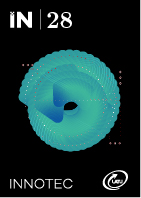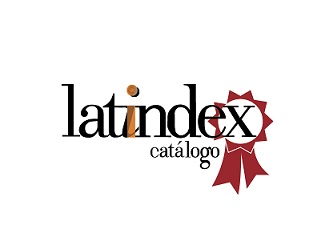Potential of very low enthalpy geothermal energy of Uruguay for closed vertical collectors
DOI:
https://doi.org/10.26461/28.07Keywords:
renewable energy, shallow geothermal energy, heating and cooling buildingsAbstract
Currently it is a clear worldwide trend to strengthen the energy transition, favoring the use and diversification of renewable, low-carbon and environmentally friendly energies. Wind, solar and biomass energy are the most common, but there are other sources, such as the shallow
geothermal energy. The latter takes advantage of the heat accumulated in the first meters of the subsoil for the heating and cooling of urban districts. This study presents the first map of shallow geothermal potential of Uruguay, for closed vertical collectors, based on the available geological and hydrogeological cartography and the German standard VDI 4640-2 (Verein Deutscher Ingenieure, 2019). The results indicate that Uruguay has a potential for medium to high heat extraction from rocks (greater than 40 W/m) in more than 60 % of its territory. This shallow geothermal energy potential could be used both for air-condition buildings and to provide thermal solutions to several of the activities carried out in the country (forestry,
paper mills, cereal crops, dairy farming, among others) or promote the development of new productive activities, because it is a continuous, efficient and environmentally friendly energy.
Downloads
References
Alcaraz, M. y Vives, L., 2016. Geotermia somera: una energía renovable al alcance de todos [En línea]. Buenos Aires [Consulta: 06 de marzo de 2022]. Disponible en: https://www.unicen.edu.ar/content/geotermia-somera-una-energ%C3%ADa-renovable-al-alcance-de-todos
Alcaraz, M.; Vázquez, E.; Pleitavino, M.; Sheiber, L.; River, D.; Villacreses, G.; Aravena, D.; Moreno, D.; Pedro, A.; Samaniego, L.; Ramos, A.; Carro, M.; Morillón, D.; Blessent, D; Daniele, L; Ramos, J. y Macías, J., 2019. Ibero-American atlas of shallow geothermal energy by RIGS-CYTED. San Francisco: AGU Meeting Fall. Balance energético nacional, 2020. Uruguay. Ministerio de Industria y Energía y Minería. Dirección Nacional de Energía. Montevideo. ISSN: 2730-5295.
Balance energético nacional, 2022. Uruguay. Ministerio de Industria y Energía y Minería. Dirección Nacional de Energía. Montevideo. ISSN: 2730-5295.
Bossi J. y Ferrando L., 2001. Carta geológica del Uruguay escala 1/500.000. Versión digital. Montevideo: Facultad de Agronomía.
Bossi, J. y Gaucher, C., 2004. The Cuchilla Dionisio Terrane, Uruguay: An Allochthonous Block Accreted in the Cambrian to SW-Gondwana. En. Gondwana Research, 7(3), pp. 661-674. ISSN: 1342-937X.
DEUMAN, 2020. Elaboración de una hoja de ruta nacional para el uso de energía geotérmica de baja entalpía para el acondicionamiento térmico en los sectores residencial, industrial y comercial. [En línea]. [Consulta: 29 de mayo de 2022]. Disponible en: https://www.ctc-n.org/system/files/dossier/3b/E3.1_Escenario%20actual%20de%20la%20energ%C3%ADa%20geot%C3%A9rmica.pdf
García, A.; Garrido, E. y Mejías, M., 2020. Geotermia somera: fundamentos teóricos y aplicación. Madrid: Instituto Geológico y Minero de España. ISBN: 9788491381051.
Instituto para la Diversificación y Ahorro de la Energía, 2011. Evaluación del potencial de energía geotérmica. [En línea]. Madrid [Consulta: 31 de mayo 2022]. Disponible en: https://www.idae.es/uploads/documentos/documentos_11227_e9_geotermia_A_db72b0ac.pdf
Instituto para la Diversificación y Ahorro de la Energía, 2012. Guía técnica de diseño de sistemas de intercambio geotérmico de circuito cerrado. [En línea]. Madrid. ISBN: 978-84-96680-60-9. Disponible en: https://www.idae.es/sites/default/files/documentos/publicaciones_idae/documentos_14_guia_tecnica_diseno_de_sistemas_de_intercambio_geotermico_de_circuito_cerrado_1a7cff37.pdf
Instituto Nacional Uruguayo de Meteorología, 2022. Estadísticas climatológicas: Tablas estadísticas. [En línea]. Montevideo [Consulta: 1 de junio 2022]. Disponible en: https://www.inumet.gub.uy/clima/estadisticas-climatologicas/tablas-estadisticas.
LEBAC, 2008. Informe Final de Hidrogeologia do Projeto Aquífero Guarani. Coord.: Gastmans, D. y Chang, H.K. Equipe: Paula e Silva, F., Correa, S.F., Informe Técnico – Consórcio Guarani. Rio Claro. Lund, J.; Freeston, D. y Boyd, T., 2005. Direct application of geothermal energy: 2005 Worldwide review. En: Geothermics, 34. pp. 691-727. DOI: https://doi.org/10.1016/j.geothermics.2005.09.003.
Masquelin, H., 2006. El escudo uruguayo. En: Cuencas Sedimentarias de Uruguay: geología, paleontología y recursos naturales. Paleozoico. Montevideo: DIRAC pp. 37-106.
Morales, E.; Pedro, A. y De León, R., 2020. Geothermal gradients and heat flow in North Basin of Uruguay. En: International Journal of Terrestrial Heat Flow and Applied Geothermics, 3(1), pp. 20-25. DOI: https://doi.org/10.31214/ijthfa.v3i1.43
Morales, E.; Veroslavsky, G.; Manganelli, A.; Marmisolle, J.; Pedro, A.; Samaniego, L.; Plenc, F.; Umpiérrez, R.; Ferreiro, M. y Morales Demarco, M., 2021b. Potential of gothermal energy in the onshore sedimentary basins of Uruguay. En: Geothermics. 95. DOI: https://doi.org/10.1016/j.geothermics.2021.102165
Oyhantçabal, P.; Siegesmund, S. y Wemmer, K., eds., 2011. The Río de la Plata Craton: a review of units, boundaries, ages and isotopic signature [En línea], En: Int. J. Earth. Sci. [Consulta: 17 de mayo de 2022] DOI: https://doi.org/10.1007/s00531-010-0580-8
Pacheco, A., 2012. Aprovechamiento del recurso geotérmico a través de las cimentaciones y otras estructuras. [En línea]. Universidad Politécnica de Catalunya. [Consulta: 17 de marzo de 2022]. Disponible en: https://core.ac.uk/download/pdf/41808248.pdf
Plenc Nobre, F., 2021. Análisis magnetotelúrico de la cuenca Laguna Merín (SE, Uruguay). Tesis de grado. Universidad de la República. Uruguay.
Preciozzi, F.; Sportuno, J.; Heinzen, W. y Rossi P., 1985. Carta geológica del Uruguay a escala 1:500.000 [En línea]. Montevideo: Uruguay. Ministerio de Industria y Energía. Dirección Nacional de Minería y Geología, [Consulta: 20 de diciembre de 2021]. Disponible en: https://www.gub.uy/ministerio-industria-energia-mineria/sites/ministerio-industria-energia-mineria/files/documentos/publicaciones/Mapa%20Geol%C3%B3gico%20del%20Uruguay.pdf
QGIS, 2022. QGIS Geographic Information System. Open Source Geospatial Foundation Project.. Vers. 3.22. Bialowieza: QGIS. Disponible en: http://qgis.org
Sánchez Bettucci L; Peel E. y Masquelin E., 2010. Neoproterozoic tectonic synthesis of Uruguay. En: International Geology Review, 52 pp. 51–78.
Santoyo, E. y Barragán-Reyes, R., 2010. Energía geotérmica. En: Ciencia. 61, pp. 40-51. DOI: https://www.revistaciencia.amc.edu.mx/images/revista/61_2/PDF/EnergiaGeotermica.pdf
SEG, 2023. Indicadores energéticos. Montevideo. [Consulta: 30 de Mayo de 2023]. Disponible en: https://www.segingenieria.com/wp-content/uploads/2023/05/Indicadores-Energéticos_2304.pdf
Spoturno, J.; Oyhantaçabal, P.; Goso, C.; Cazaux, S.; Aubet, N.; Huelmo, S.; Morales, E.; Piñeiro, A. y Martinez, G., 2004a. Mapa geológico del departamento de Canelones a escala 1:100.000.
Spoturno, J.; Oyhantçabal, P.; Goso, C.; Aubet, N.; Cazaux, S.; Huelmo, S.; Techera, J.; Arrighetti R.; Morales, E.; Martínez, G.; y Gianotti, V., 2004c. Mapa geológico del departamento de Montevideo a escala 1:50.000. Uruguay. Ministerio de Industria y Energía. Dirección Nacional de Minería y Geología.
Uruguay. Ministerio de Industria y Energía. Dirección Nacional de Minería y Geología. Spoturno, J.; Oyhantçabal, P.; Aubet, N.; Cazaux, S.; Morales, E. y Loureiro, J., 2004b. Mapa geológico del departamento de San José a escala 1:100.000. Uruguay. Ministerio de Industria y Energía. Dirección Nacional de Minería y Geología.
Verein Deutscher Ingenieure, 2019. VDI 4640-2: Thermal use of the underground – Ground source heat pump systems. Berlin: VDI.
Veroslavsky, G.; De Santa Ana, H. y Rossello, E., 2004. Depósitos del Jurásico y Cretácico Temprano de la región meridional de Uruguay. El lineamiento Santa Lucía–Aiguá–Merín. En: Cuencas Sedimentarias del Uruguay-Mesozoico. pp. 117-142.
Veroslavsky, G.; Manganelli, A.; Aubet, N.; Pochintesta, L. y Pedro, A., 2022. Geología del área aflorante del Sistema Acuífero guaraní, Cuenca Norte. Montevideo. [En línea] En: XXI Congreso Geológico Argentino “Geología y desarrollo, desafíos del siglo XXI” Puerto Madryn - Argentina, 14-18 de marzo.
Additional Files
Published
How to Cite
Issue
Section
License
Copyright (c) 2024 Martín Dos Santos Lafuente, Cintia Alcoba, Ethel Morales, Carlos Bello

This work is licensed under a Creative Commons Attribution-NonCommercial 4.0 International License.
Los autores del manuscrito declaran conocer y aceptar los siguientes términos de responsabilidad:
Haber participado lo suficiente en el trabajo como para hacer pública la responsabilidad por su contenido.
Que el manuscrito representa un trabajo original que no fue publicado ni está siendo considerado por otra revista para su publicación, en parte o en forma íntegra, tanto impresa como electrónica.
Que en caso de ser solicitado, procurará o cooperará en la obtención y suministro de datos sobre los cuales el manuscrito esté basado.
Declara que la información divulgada que pudiera pertenecer a un tercero cuenta con la autorización correspondiente.
Autorización para la publicación y compromiso de cita de primera publicación
Los autores/as conservan los derechos de autor y ceden a la revista INNOTEC / INNOTEC Gestión el derecho de la primera publicación, con el trabajo registrado con la licencia de atribución Creative Commons Reconocimiento-NoComercial 4.0 Internacional. Creative Commons, que permite a terceros utilizar lo publicado siempre que mencionen la autoría del trabajo y a la primera publicación en esta revista sin fines comerciales.
El autor se compromete a realizar la cita completa de la edición institucional de esta primer publicación en las siguientes publicaciones -completas o parciales- efectuadas en cualquier otro medio de divulgación, impreso o electrónico.
Los autores/as pueden realizar otros acuerdos contractuales no comerciales independientes y adicionales para la distribución no exclusiva de la versión del artículo publicado en esta revista (p. ej., incluirlo en un repositorio institucional o publicarlo en un libro) siempre que indiquen claramente que el trabajo se publicó por primera vez en esta revista.
Se permite a los autores/as publicar su trabajo en Internet (por ejemplo en páginas institucionales o personales) antes y durante el proceso de revisión, ya que puede conducir a intercambios productivos y a una mayor y más rápida difusión del trabajo publicado (vea The Effect of Open Access). A su vez los autores/as autorizan al LATU a publicar el trabajo en su repositorio digital.
Los conceptos y opiniones vertidos en los artículos son de responsabilidad de sus autores.
Este obra está bajo una licencia Reconocimiento-NoComercial 4.0 Internacional.












